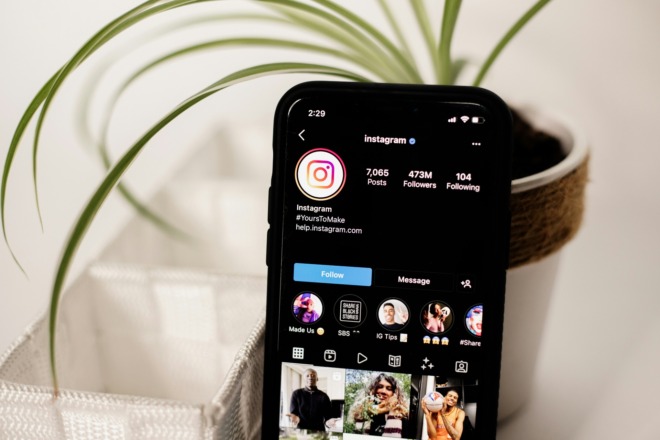Cold email often gets a bad rap, and it’s no wonder. As a small-business owner, the thought of contacting strangers via email can be frightening. The fear of receiving an angry response telling you never to contact that person again can make anyone reluctant to try it. Yet, here’s the thing — once you get over that initial hurdle, a cold email can open doors you never imagined.
It all comes down to how you craft your message and approach prospective buyers. Once you understand how cold emails work, you can make a positive impression and grow your business.
What Is Cold Emailing?
Cold emailing is when you send messages to people you don’t know to introduce your business and make an offer. Unlike warm emails — which go to people who already know your brand — cold emails go to prospects who haven’t had prior contact with you.
It’s similar to how you would cold call someone but is less intrusive and more strategic. The objective is to spark interest, build relationships, and convert them into clients or business partners. When done right, cold emailing can be a powerful way to reach potential clients and expand your network.

Why You Should Consider Cold Email for Business Growth
Cold emails offer several advantages for small businesses. First, they’re more cost-effective than traditional marketing methods. It requires minimal financial investment, making it accessible to any business.
Additionally, it allows for highly targeted outreach. By customizing your email list based on industry, location and other relevant factors, you can reach the exact audience most likely to be interested in your product or service.
Take Mailshake’s success, for example. The company ran an A/B test that increased appointments by 97%. Its strategy was straightforward — it set a clear goal of generating one call per day for its client. To achieve that number, this meant aiming for three interested replies daily.
Its targeted emails focused on specific industries, business owners and geographic locations. The first email was direct but received skeptical responses. After refining the second version, it led to an 18% reply rate, with many recipients ready to schedule a call.
With a thoughtful approach, cold emailing can be highly effective, but it also presents challenges. It could be a deliverability issue where your email goes to spam. Or, your email’s copy might not speak to the recipient, and the offer may not be appealing. Yet, with the right knowledge and strategy, you can overcome these obstacles and turn cold leads into buyers.
1. Don’t Be Salesy or Pushy
When crafting a cold email, it’s crucial to avoid being overly sales-pushy. Instead, use this opportunity to introduce yourself and your business. Make your initial contact to start a conversation like you’re meeting someone new in person.
You wouldn’t walk up to someone you find attractive and immediately ask them out. You’d take the time to get to know each other first. This approach builds rapport and lets both of you determine if there’s a mutual fit. So, focus on creating a connection rather than making an immediate sale. Doing so lays the groundwork for a relationship leading to future business opportunities.
2. Don’t Send Too Many Emails in a Day
Sending too many cold emails in a day can be counterproductive. When you try reaching out to many prospects simultaneously, you lose the opportunity to personalize each email, which is the foundation of making your messages appealing.
Additionally, sending fewer emails gives you time to segment your leads. You can distinguish your warm prospects from your cold ones, ensuring you engage with the audience more meaningfully. Yet, it also keeps you safe from Google marking you as spam. As a result of limiting the number and diversifying the amount you send, you can stay focused on quality over quantity.
3. Don’t Send Emails to Just Anyone
To max out your offers, you must create a profile of your ideal customer. This should include their key characteristics such as industry, job title, company size and location. When you know who you want to target, you can narrow down your prospects and target your emails more effectively.
4. Don’t Use a Cold Email Template
Avoid using cold email templates at all costs. Templates can be the bane of effective communication, often making your messages seem robotic and impersonal. While it may be tempting to customize a template to your liking, it rarely achieves the level of personalization needed to truly connect with prospects.
You should craft each email specifically for the recipient, reflecting their needs and interests. Doing so increases your chances of them seeing you in their inbox. Yet, it also shows you’ve taken the time to understand their business, making it more likely for you to receive a positive response.

5. Don’t Make a Cold Email All About Yourself
Make the email all about them and find out what you can do to serve their needs. The focus should be on them because they will be more willing to respond. Therefore, you should start by researching the recipient and their pain points. Show them you have a solution to their problem, but be genuine from the start. Doing so will demonstrate that you’re there to help, not sell.
6. Do Personalize Your Offer
As soon as you’ve researched the prospect and their business, they may be ready to hear about your offer. Take the time to craft an email that speaks to their needs. When you make an offer that aligns with their goals, you make it more compelling and relevant.
7. Do Keep The Cold Email Short
Avoid the temptation to write a lengthy spiel in your cold email. Keeping your email short and to the point is critical. The objective is to warm your prospects to garner their interest, not overwhelm them with information.
A long email takes too much time to read, and busy professionals may not have the time to go through it all. Keep your message concise so they will be more likely to read and respond. As such, you may open the door to further communication.
8. Do Use a Proper Email Address
An email from a professional, recognizable address is more likely to be trusted and opened. Avoid using personal email addresses or ones with numbers and letters. Instead, use your business domain to make yourself look more credible and increase the chances of a successful outreach.
9. Do Combine Cold Emails With Other Methods
Cold emails work more effectively with other methods, such as social selling or inbound marketing. Integrating them with these strategies can amplify your results.
Social selling is about building relationships and trust with prospects before sending an email, while inbound marketing organically attracts potential clients. By using a multi-channel approach, you create more touchpoints and opportunities for engagement.
10. Do Get Creative With Copywriting
Be bold and get creative with your email copy. Try this out by experimenting with different approaches. Use A/B testing to send out two variations and see which performs better. This could involve changing the subject line, the call-to-action or the overall tone of the email. A creative and well-tested copy can greatly improve your interactions and overall strategy.
Use Cold Emails the Right Way
Cold emailing is an art form that requires a strategic approach and a focus on building connections. Avoid the common pitfalls and follow best practices to improve your outreach efforts. When you aim to build relationships, you can achieve more fruitful business opportunities. However, finding the right technique for your business takes some time and experimentation before you achieve lasting success.
About The Author
Cooper Adwin is the Assistant Editor of Designerly Magazine. With several years of experience as a social media manager for a design company, Cooper particularly enjoys focusing on social and design news and topics that help brands create a seamless social media presence. Outside of Designerly, you can find Cooper playing D&D with friends or curled up with his cat and a good book.


